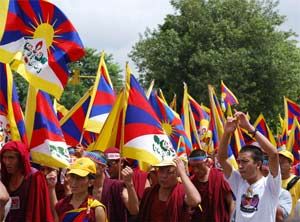Washington: India-US relations were poised to become “even deeper” after a quiet consolidation during a contentious election year when everything but India was up for debate between rival contenders for the White House.

And after his re-election, Indian Prime Minister Manmohan Singh was among the world leaders Obama personally called to thank for their congratulatory messages and to express his “desire to continue close cooperation moving ahead”.
Predicting an “even deeper and more rewarding engagement” during Obama’s second term, India’s Ambassador to US Nirupama Rao noted how India-US strategic partnership had moved over the last four years from a ‘consolidation’ phase into one of “comprehensive and multifaceted engagement”.
With the dust of election settled, Obama’s election cycle rant against outsourcing was not heard again and commercial ties between the two countries too were poised to continue their upward trajectory with the two-way trade between them set to cross $100 billion this year.
The Indian parliament’s approval of FDI in retail trade removed another irritant in India-US ties to the delight of corporate America as New Delhi assured it “a level playing field” and “total transparency” with an invitation to take advantage of India’s plans to invest over a trillion dollars in infrastructure development.
The Democratic Party vowed to continue in Obama’s second term “to invest in a long-term strategic partnership with India to support its ability to serve as a regional economic anchor and provider of security in the broader Indian Ocean region”.
Romney’s Republicans too had sought “a stronger relationship with the world’s largest democracy, India, both economic and cultural, as well as in terms of national security” while urging New Delhi to permit greater foreign investment and trade.
Given the bipartisan consensus over India, Deputy Secretary of State William Burns travelled to India, even before the election results were out, to seek India’s help to influence Iran to join international negotiations to break the logjam over Tehran’s nuclear ambitions.
India and the US also agreed to take forward their cooperation on Afghanistan following the first US-Afghanistan-India trilateral dialogue in New York in September.
At their third strategic dialogue in Washington in June, India and the US further consolidated their ties after the US gave New Delhi a waiver on Iran oil sanctions and a breakthrough was reached on the stalled civil nuclear deal even as differences persisted in perception over India’s civil nuclear liability law.
There was no one single overarching outcome of the dialogue, but a 13-point joint statement listing progress in seven key areas ranging from counter-terrorism to people-to-people ties took note of “the remarkable expansion and growth of the bilateral relationship since the inaugural Strategic Dialogue in 2010”.
However, a hike in US visa fee for skilled professionals remained an irritant in ties leading to the Indo-US joint commission on science and technology unanimously urging that the two sides work together to remove impediments in visa matters and biological material transfer required for bilateral S&T programmes.
But, despite ups and downs, India and the US appeared set to continue what Secretary of State Hillary Clinton, one of the prime movers of India-US ties, has called an “affair of the heart” even as she herself was ready to hang up her boots.
– IANS
The opinions, beliefs and viewpoints expressed by authors, news service providers on this page do not necessarily reflect the opinions, beliefs and viewpoints of Hill Post. Any views or opinions are not intended to malign any religion, ethnic group, club, organization, company, or individual.
Hill Post makes no representations as to the accuracy or completeness of any information on this site page.



